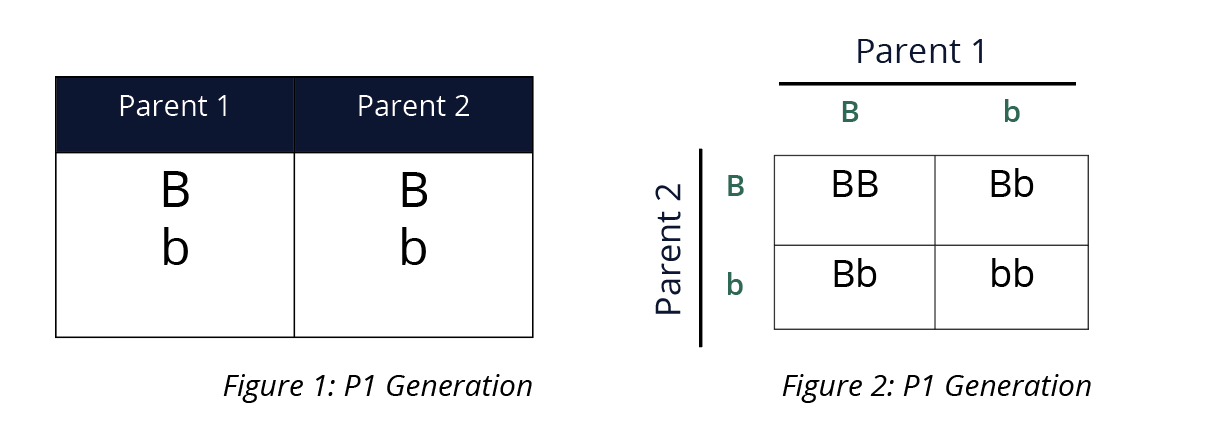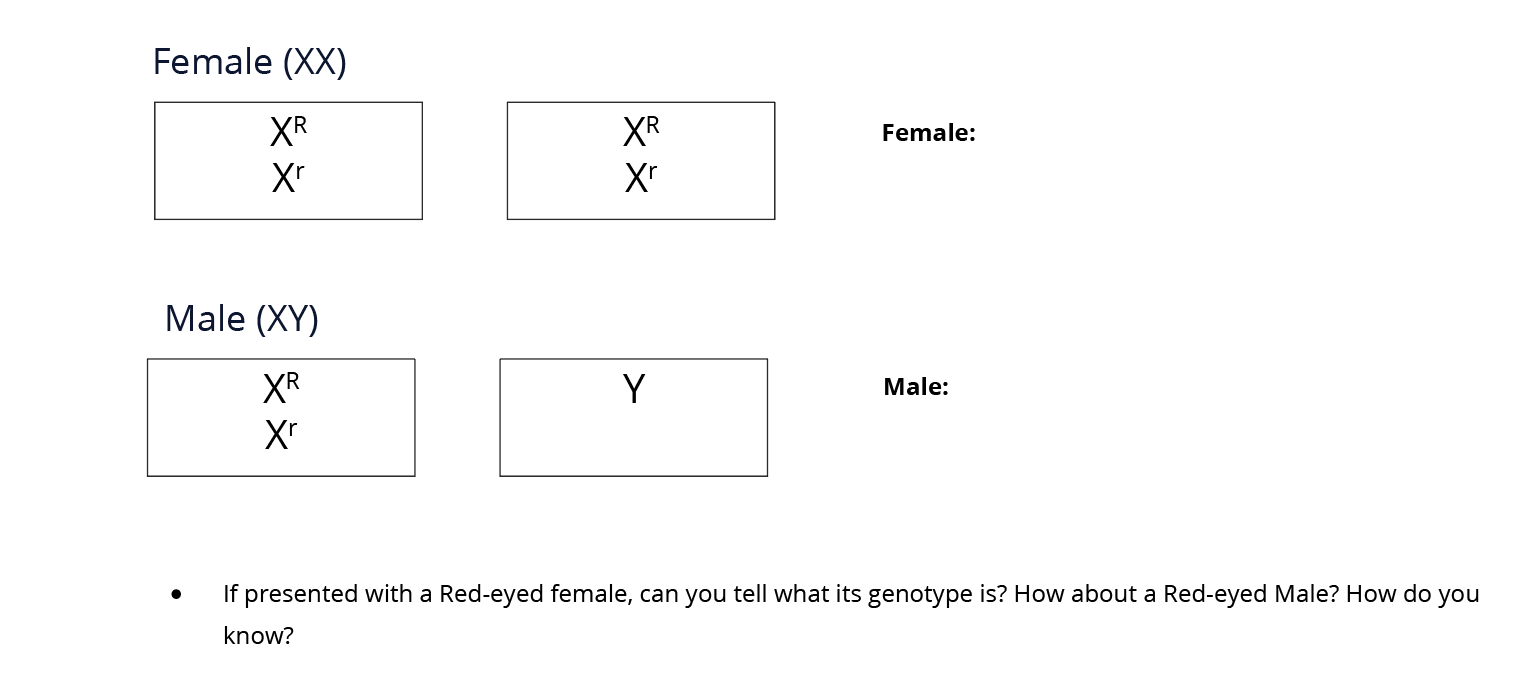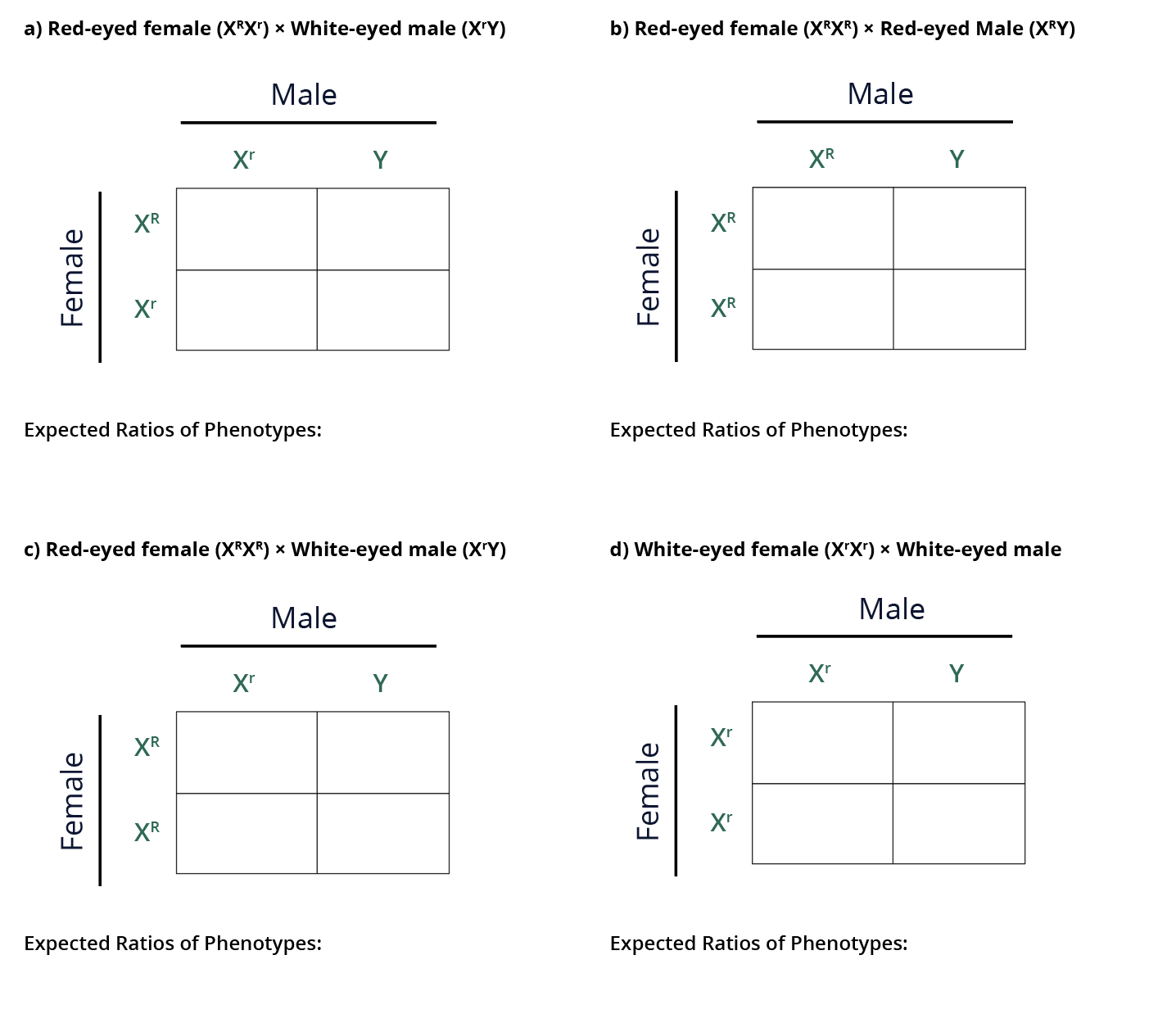Drosophila Genetics

AUSTRALIAN CURRICULUM ALIGNMENT
-
Frequencies of genotypes and phenotypes of offspring can be predicted using probability models, including Punnett squares, and by taking into consideration patterns of inheritance, including the effects of dominant, autosomal and sexlinked alleles and multiple alleles, and polygenic inheritance
BACKGROUND
Genetic inheritance refers to how characteristics are passed from one generation to the next. Genetic material in the form of DNA is passed from parents to their offspring. This DNA provides different combinations of alleles that code for different phenotypic (observable) expressions of a genetic trait. When a trait is dominant, only one allele is required for the trait to be observed and the dominant allele will mask a recessive allele, if present. Certain characteristics, such as, colour blindness are more prevalent in individuals of one gender compared to the other. This is because some alleles are linked to sex chromosomes. Understanding dominant and recessive inheritance and the relationship between genotype and phenotype can be difficult. However, Punnett squares provide a way to graphically predict the number and types of genotypes and phenotypes produced by a specific cross.

The B allele is dominant, resulting in two combinations coding for black hair. This dominance is signified by the use of a capital letter. The presence of a dominant allele in a combination (BB or Bb), or genotype, will result in the associated phenotype being expressed. In this example, the expressed phenotype is black hair. Recessive alleles (b) are expressed only when the genotype does not contain the dominant allele (bb). Every individual has a pair of alleles as one allele comes from Parent 1 and another comes from Parent 2. The dominant allele is always the first to be recorded in a genotype. A homozygous genotype contains two of the same alleles (BB or bb). A heterozygous genotype contains two different alleles (Bb). Figure 2 is a Punnett square illustrating all possible combinations of alleles for the hair colour for offspring of Parent 1 and Parent 2. As the B allele is dominant, only 1 in 4 or 25% of offspring expressing brown hair. Punnett square is used to clearly visualise the likelihood of all combinations and provides unbiased probabilities of inheritance. In a Punnett square the parental genotypes are labelled along the outside edges and the allele combinations are written within the square. The position of the parental alleles on the outside of the Punnett square are used as guides with Parent 1’s alleles shown in their own column, and Parent 2’s alleles shown in their own row.
METHOD - STUDENT ACTIVITY
Determining Possible Sex of OffspringCertain characteristics, such as, colour blindness are more prevalent in individuals of one gender compared to the other. This is because some alleles are linked to sex chromosomes. Eye colour is controlled by sex-linked alleles in Drosophila; alleles for the expression of red (R) or white eyes (r) are carried on the X chromosome. The relationship between the X chromosome and these alleles is represented as XR or Xr. The X and Y chromosomes must be considered when developing a Punnett square for a sex-linked cross. Fill in the Punnett square below that examines chromosome inheritance. Use the same method you would use to fill in Punnett square that examines allele combinations.

To develop a Punnett square that predicts eye colour in Drosophila, you must consider both the sex chromosomes and the sex-linked alleles. The patterns of inheritance for the sex chromosomes (X and Y) outlined in step 1 should be followed here. Fill in Punnett square below, including both types of information.This cross has a mother (XrXr) with white eyes, and a father (XRY) with red eyes. In any offspring there is a 50% probability of red eyes and a 50% probability of white eyes. In males, any allele carried on the X chromosome for a trait that is not represented at all on the Y chromosome will be expressed.


The tables below show all possible chromosomes and sex-linked alleles. Based on this information, Write down all the potential genotypes and phenotypes for eye colour in Drosophila females (XX) and males (XY).


OBSERVATIONS AND RESULTS

INVESTIGATIONS
-
Ask students what trait they have studied. Students should describe its mode of inheritance.
- When studying phenotypes, the terms “wild type” and “mutant” are often used. The phenotype most frequently observed in nature is referred to as the “wild-type”. Ask students which eye colour do you think is the wild type in these flies.
EXTENSION EXERCISES
A great way to extend this investigation is to turn theory into practice. Conduct an actual cross using white and red-eyed drosophila. Ask students to hypothesise what they expect to see prior to conducting the cross and use a Punnett square to predict the phenotypic ratio. Once student have produced the F1 generation, they can then observe the drosophila and count number of white and red-eyed drosophila to determine actual phenotypic ratio. Students may even continue to make crosses to produce the F2, F3, and F4 generations.
 Time Requirements
Time Requirements
- 50 mins
 Material List
Material List
-
Pen
- Paper
